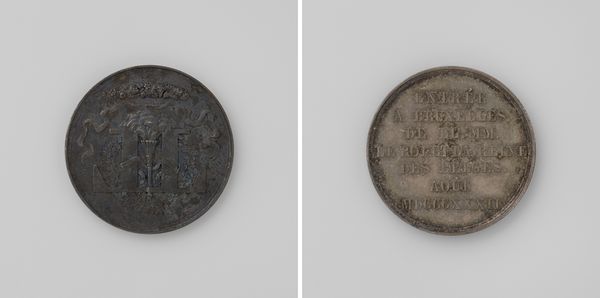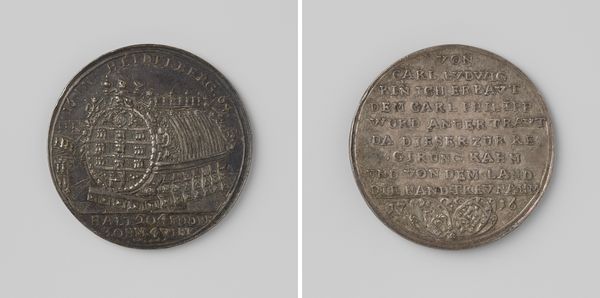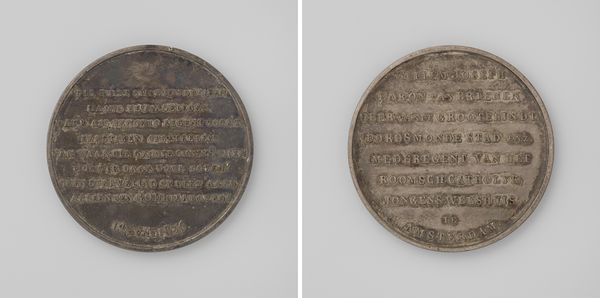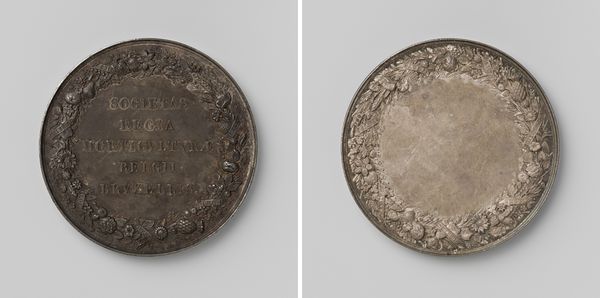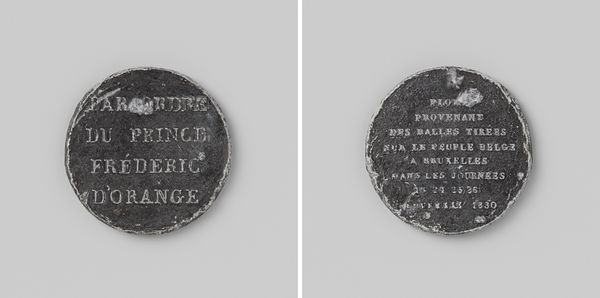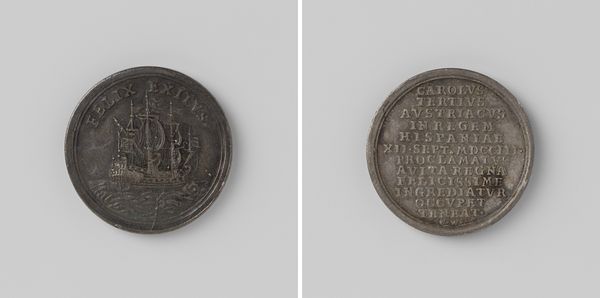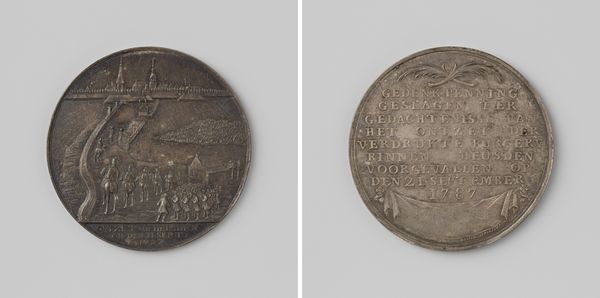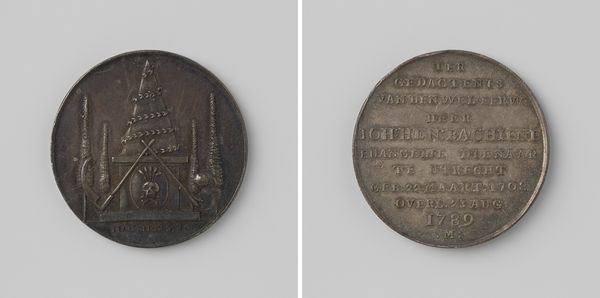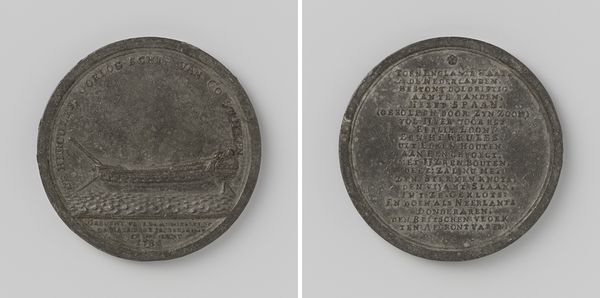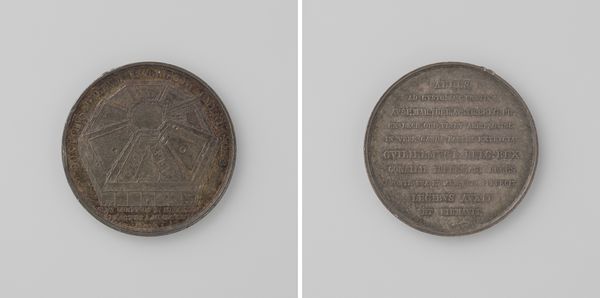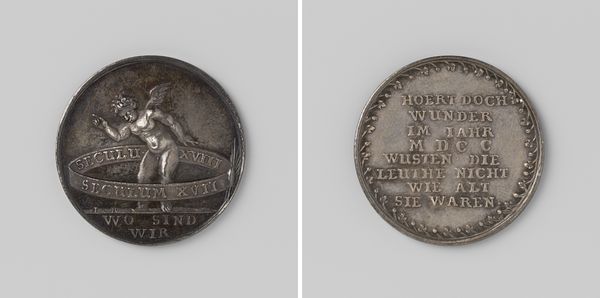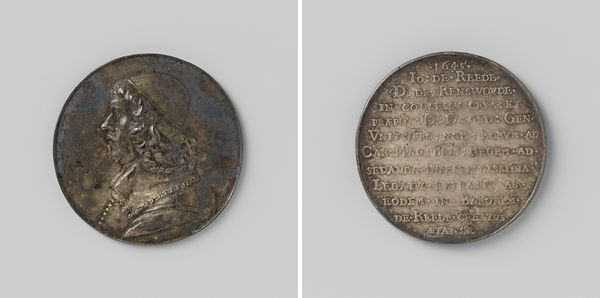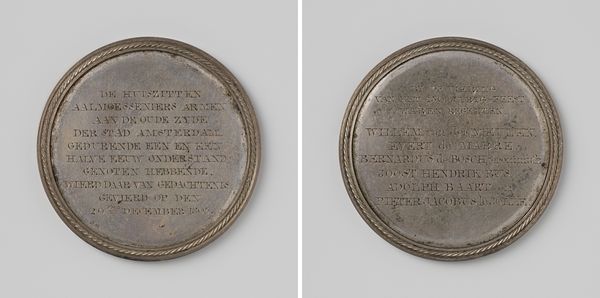
Vijftigjarig huwelijk van Willem R. van Tuyll van Serooskerke en Johanna Catherina Fagel 1821
0:00
0:00
metal, relief
#
portrait
#
neoclacissism
#
metal
#
sculpture
#
relief
Dimensions: diameter 2.6 cm, weight 5.87 gr
Copyright: Rijks Museum: Open Domain
Curator: Looking at this piece, it's remarkable how such a small object can speak volumes about societal values. This is a medal, created in 1821 by Joseph-Pierre Braemt. It commemorates the fiftieth wedding anniversary of Willem R. van Tuyll van Serooskerke and Johanna Catherina Fagel. It’s crafted from metal and presents a Neoclassical style. Editor: Immediately, I see it. It's somber, a touch austere. That cool metal and formal script, especially those Roman numerals...It speaks to a society deeply concerned with legacy and social standing. The conjoined hands offer a warmer contrast. Curator: Absolutely. It was a period of great social change. These commemorative medals, struck for significant life events, highlight the importance of family and lineage within the Dutch elite. The conjoined hands are a beautiful, if conventional, symbol of unity and lasting love, reinforcing the idea of a stable, ordered society, something deeply valued during the post-Napoleonic era. Editor: I see that, and it makes me think about who got to participate in crafting these visual narratives. Did this couple commission it? What control did Johanna Catherina have over her own representation in the piece, if any? Considering the limited roles afforded to women at the time, was her personhood simply absorbed into her husband's lineage? Curator: Those are critical questions. We know that Braemt was a renowned medalist, frequently commissioned by the elite. So, yes, the Van Tuyll family most likely commissioned it, and likely had approval over its design and message. As for Johanna Catherina’s input, sadly, the historical record is scant. Though absent of direct confirmation, it seems highly probable that her visibility in the design would be in the hands of men who saw her primarily as the family matriarch. But her name is there. Editor: Even so, there's resistance to that erasure, even in the record that is absent. Examining how people are intentionally included and excluded exposes the ideologies underpinning these pieces. It makes us realize whose stories were and still are—deemed worthy of memorialization. Curator: Precisely. Analyzing the broader societal structures enables a more nuanced interpretation of even the smallest of objects like this one, challenging the monolithic narrative they seemingly present at first glance. The very act of commissioning such a medal served as a powerful demonstration of the couple's enduring legacy, subtly reinforcing societal hierarchies during an era of revolutionary upheaval. Editor: Right, art as a mirror to and reinforcement of society's power dynamics. A fascinating glimpse into history. Curator: Indeed, prompting a fresh understanding of their roles and values in history.
Comments
No comments
Be the first to comment and join the conversation on the ultimate creative platform.
